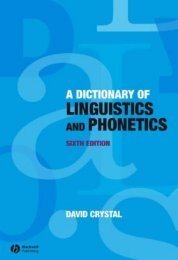url?sa=t&source=web&cd=3&ved=0CC0QFjAC&url=http://www.teachingenglish.org.uk/sites/teacheng/files/B369-Young-Learners-Activity-Book_v10
url?sa=t&source=web&cd=3&ved=0CC0QFjAC&url=http://www.teachingenglish.org.uk/sites/teacheng/files/B369-Young-Learners-Activity-Book_v10
url?sa=t&source=web&cd=3&ved=0CC0QFjAC&url=http://www.teachingenglish.org.uk/sites/teacheng/files/B369-Young-Learners-Activity-Book_v10
Create successful ePaper yourself
Turn your PDF publications into a flip-book with our unique Google optimized e-Paper software.
TeachingEnglish <strong>Young</strong> <strong>Learners</strong> <strong>Activity</strong> <strong>Book</strong><br />
Activities<br />
<strong>Activity</strong> 13: Fly the airplane, pilot!<br />
Juliana Cavalieri Gonçales – Brazil<br />
Age: 5–10<br />
10–20 minutes Large classes? Yes Mixed level? Yes<br />
Materials: A piece of paper for each child.<br />
Organisation: Whole class.<br />
Aim: To revise language from previous lessons.<br />
Description: The children make paper airplanes. They then answer<br />
questions and if they get the right answers, they have the opportunity<br />
to throw their planes at ‘targets’ in the room to score points for their team.<br />
Preparation: You will need to prepare a set of questions based on work you have been doing<br />
with the children. This might be some vocabulary, a story, some grammar.<br />
Procedure<br />
1. Give each child a piece of paper and then show them how to fold a paper airplane.<br />
Be prepared to help children who struggle.<br />
2. Let the children play for a short time with their airplanes.<br />
3. Divide the children into teams.<br />
4. Now decide with the children which parts of the classroom are going to be ‘targets’. Assign a<br />
number to each target. Easy targets will have a low number, for example the table could be worth<br />
5 points. Difficult targets will have a high number, for example the trash can might be worth 20<br />
points. The most difficult target should be worth a good lot, for example, 50 points for the clock.<br />
5. The children stand in lines in their teams at the front of the class with their airplanes. Ask the first<br />
question to the front row of children. The first child to raise their hand has to answer. If the answer<br />
is right, they get the chance to throw the airplane at a target of choice. If the airplane hits the<br />
target, the child gets the points. If the answer is wrong, another child can try to answer. All the first<br />
row must then go to the back of their lines so the next set of children can have a turn.<br />
6. The team that scores the most points is the winner!<br />
Notes<br />
Once the airplanes have been made, they can be kept for the next time.<br />
You can have any number of teams, depending on the number of children in the class and the<br />
space you have.<br />
In a mixed ability class, try to make sure that children of similar ability are in the same row so that<br />
you can adapt the question to the children.<br />
32<br />
© British Council 2012





